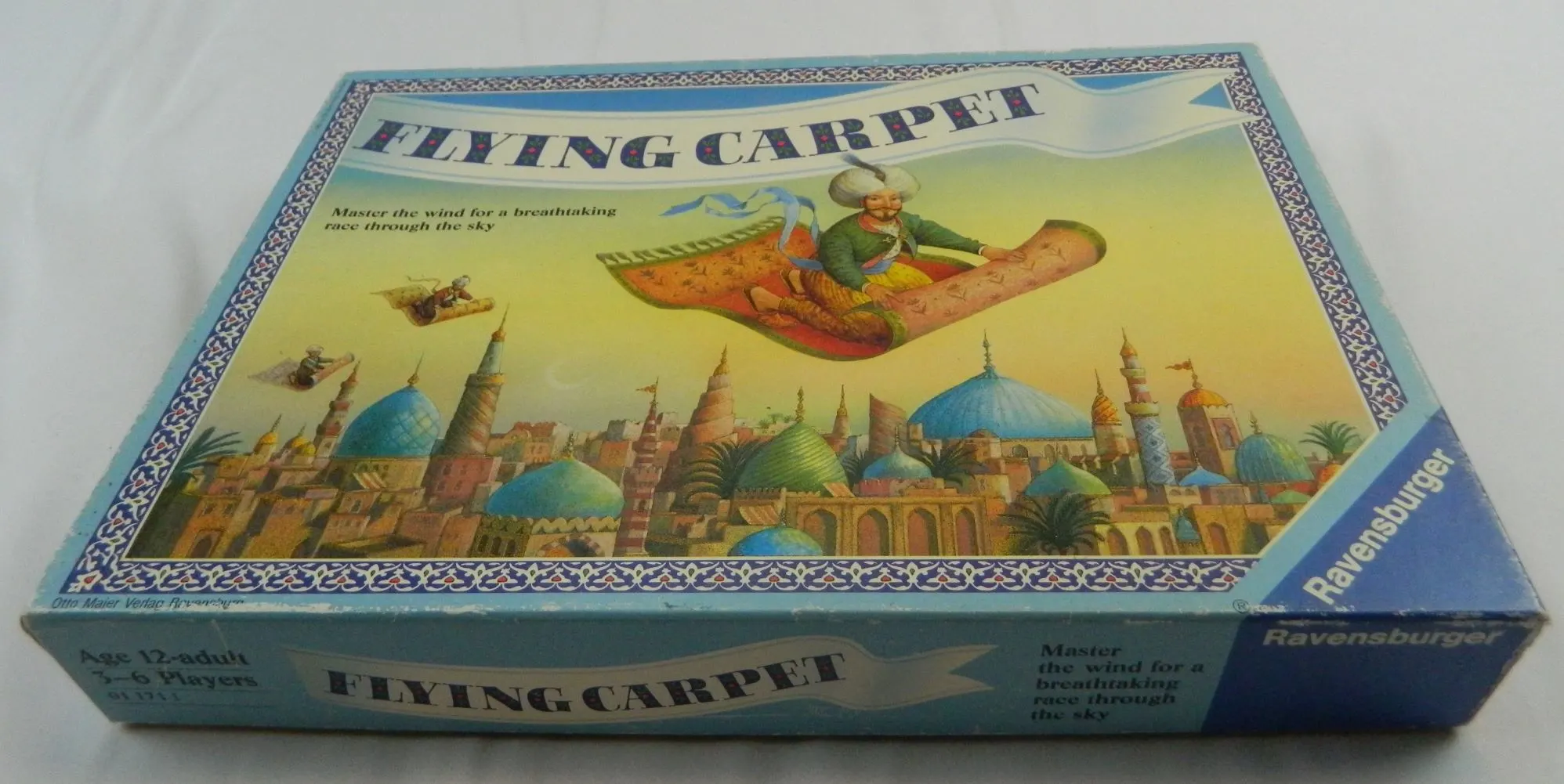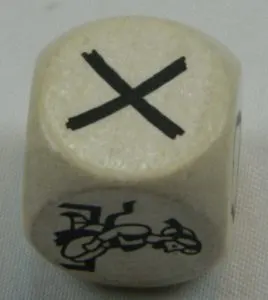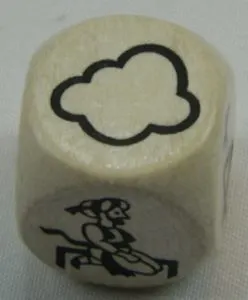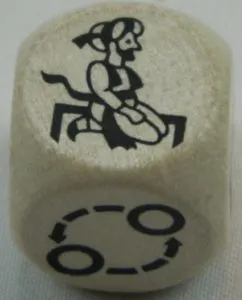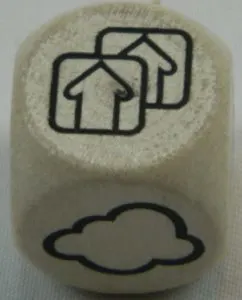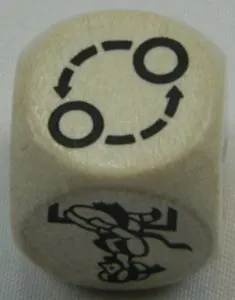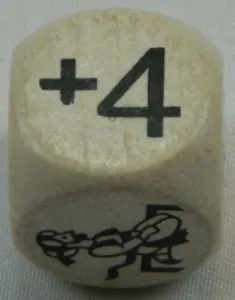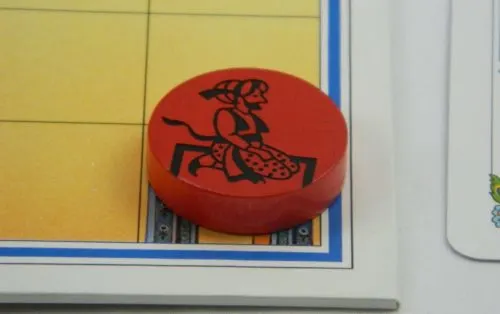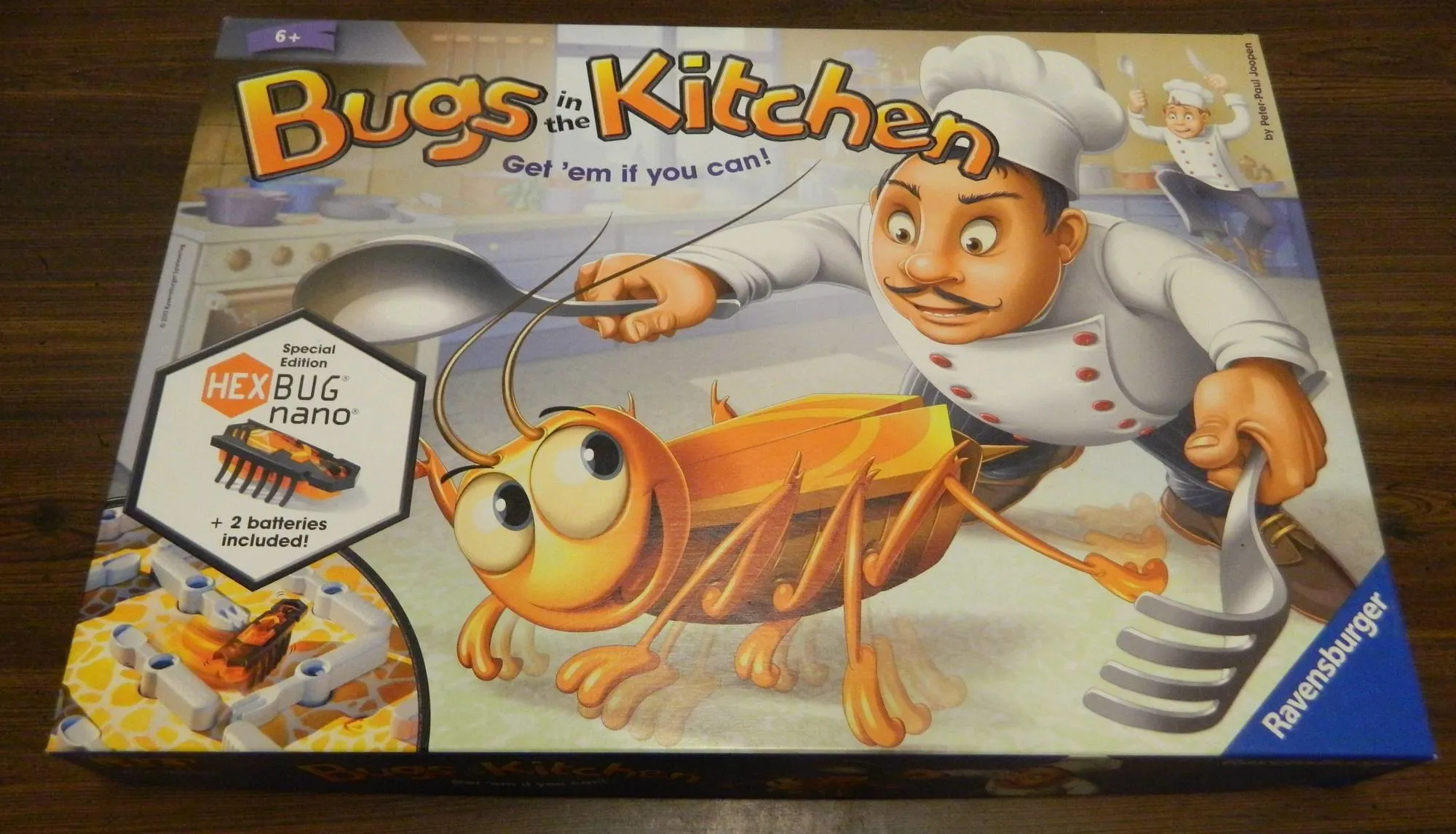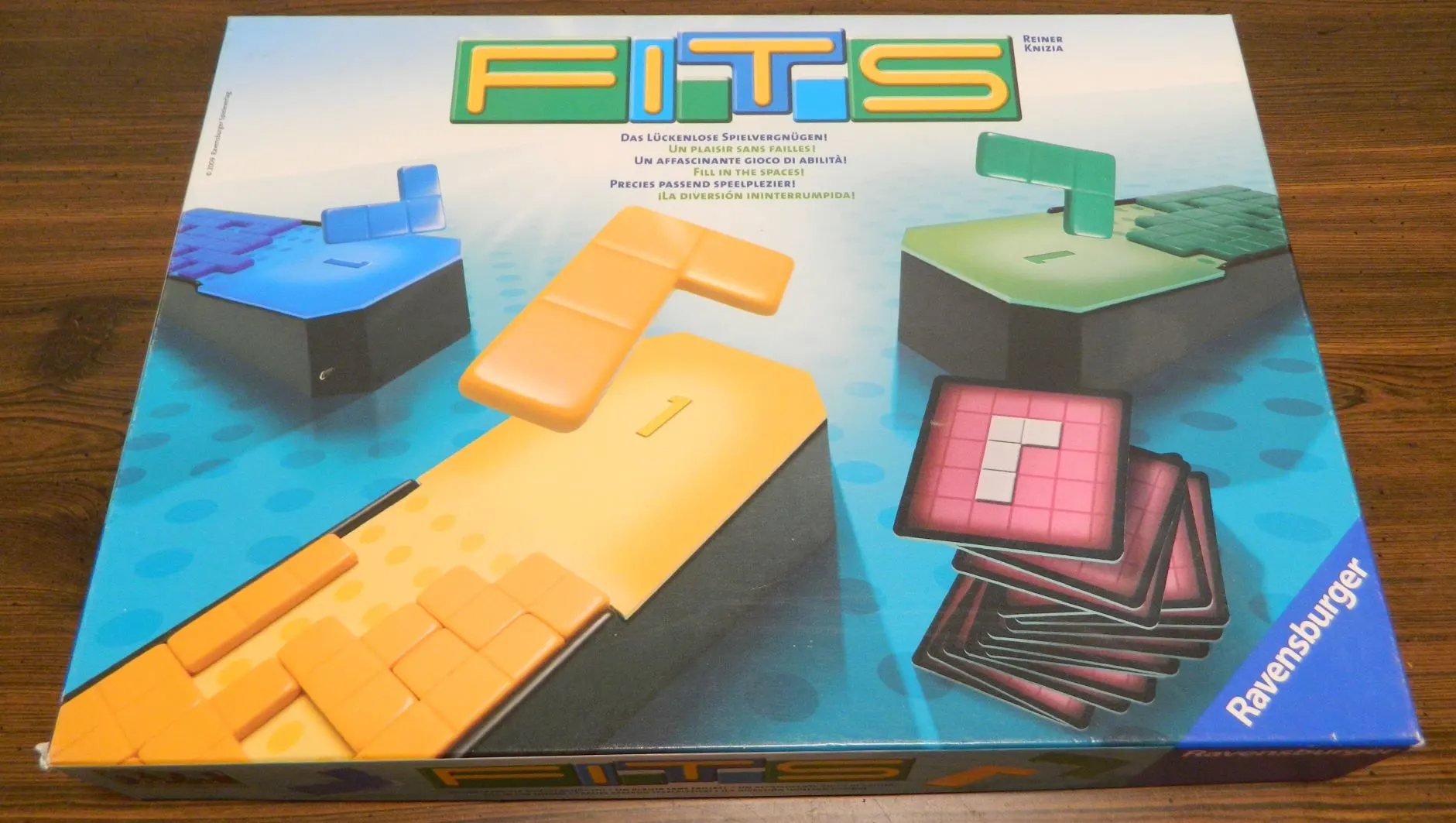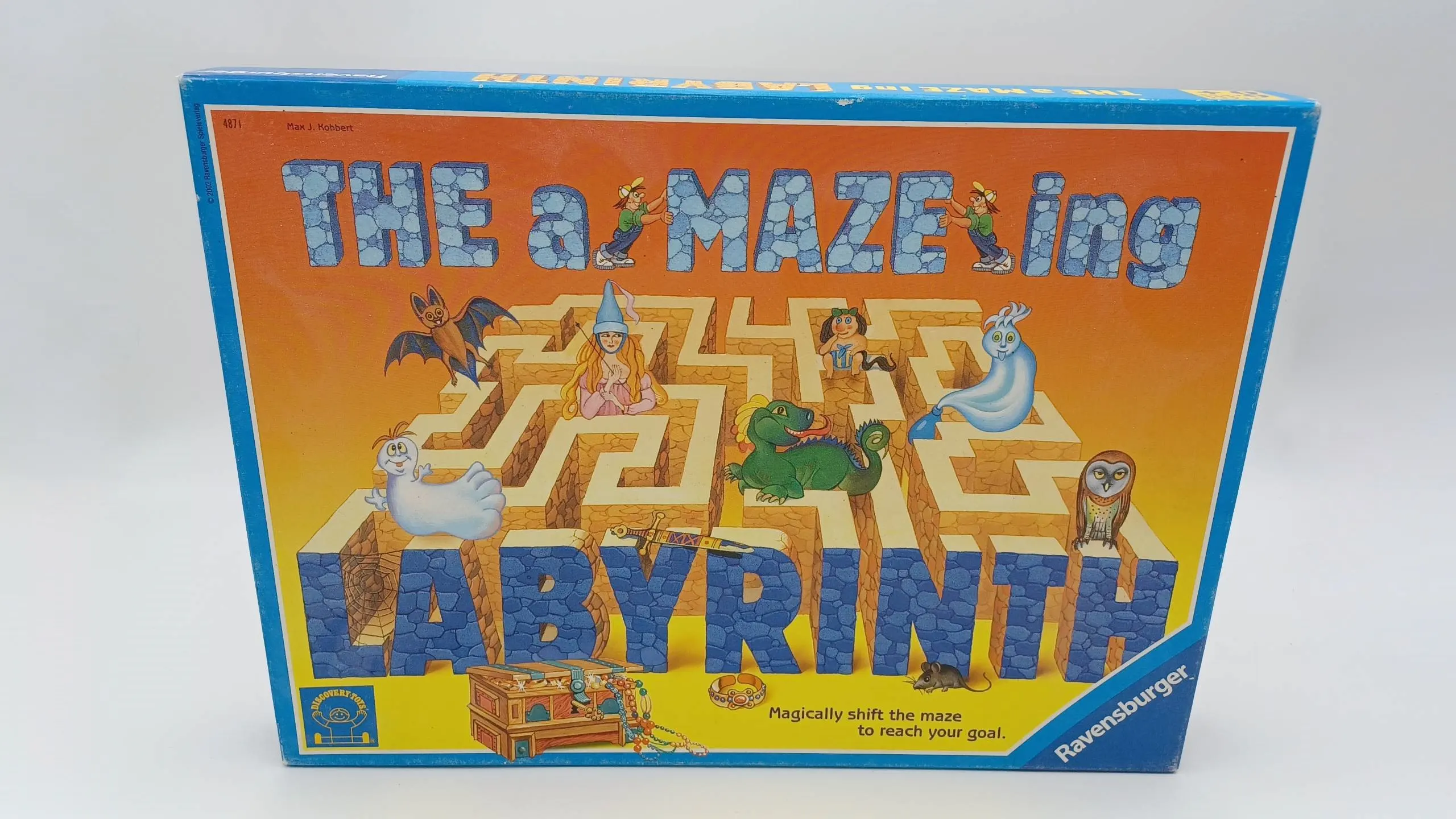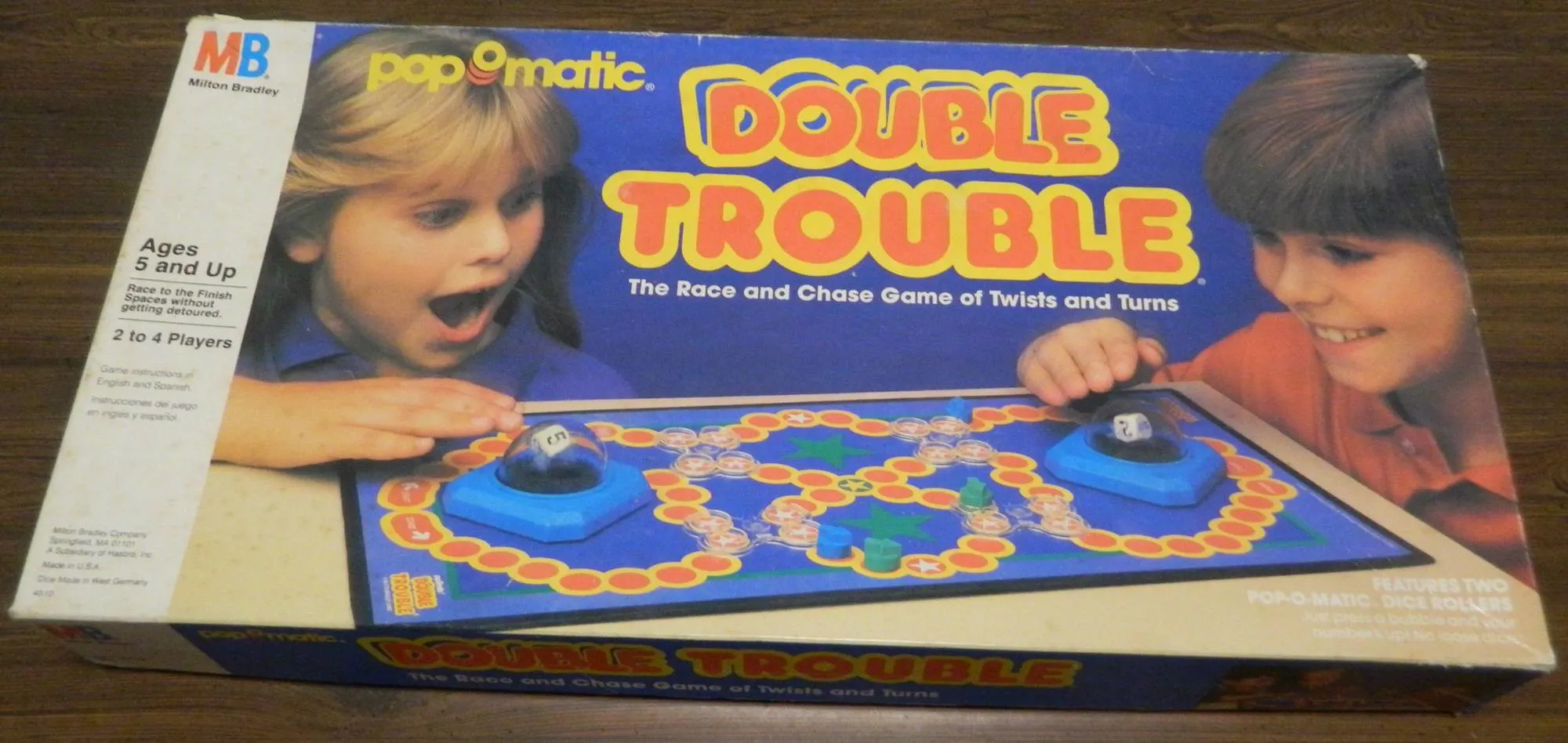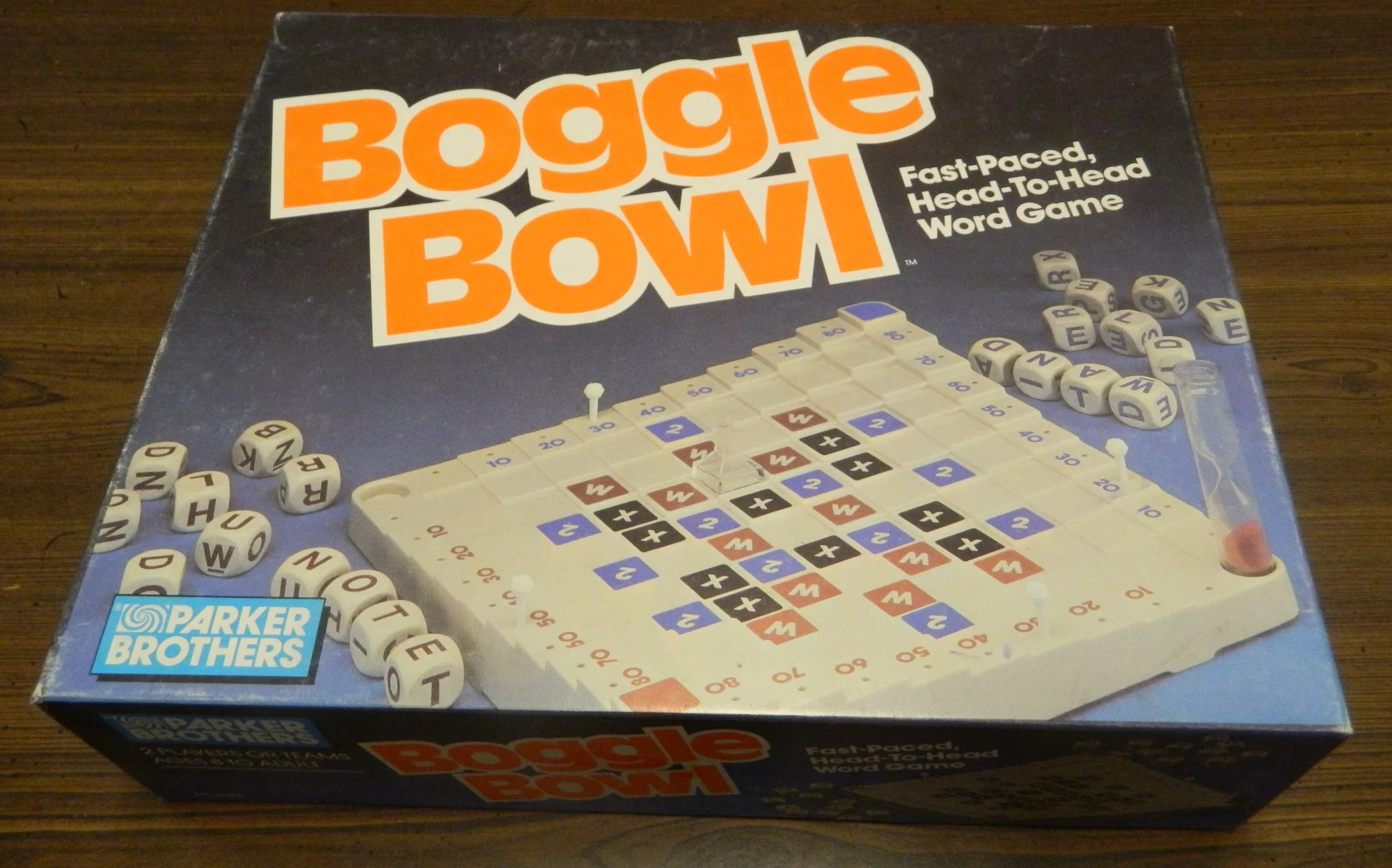I have played and reviewed a lot of different board games made over many different decades. While there are some exceptions, generally speaking the older that a board game is, the worse it likely will be. Games created before the mid 1990s in particular are much more likely to be pretty dull as there wasn’t much innovation in the genre as most games could be broken down into simple card games or some variant of a roll and move game. There are a few exceptions to the rule though which is why I still like to try out older games. Today I am taking a look at the 1987 children’s/family game Flying Carpet. While the game is actually older than I am, I had some hope for it as it was actually nominated for the Spiel Des Jahres. Flying Carpet is not the deepest game and does rely on quite a bit of luck, but for its era it had some really interesting ideas making it a game that was a little before its time.
How to Play Flying Carpet
Setup
- Place the gameboard in the middle of the table.
- The players will decide how many obstacles that they will place on the gameboard. To make the game easier you should use less obstacles and shorter buildings. For a more challenging game use most if not all of the obstacles. A couple rules regarding placing obstacles are as follows:
- All of the buildings should be placed along the bottom of the board (except in the expert game) while the clouds should be placed in the blue sections of the board.
- There must be at least one vacant column between the Start/Goal and any obstacle.
- All obstacles must be placed inside the grid on the gameboard.
- The obstacles cannot be placed in a way where it is impossible to reach the other side of the board.
- Shuffle the Wind Cards and deal four to each player. If you want a quicker game you can choose to have a hand size of five. The rest of the Wind Cards form the draw pile.
- Each player is given five Direction Tiles. They will also choose a Flying Carpet and place it on the start space (the bottom left corner space).
- Choose who will be the first player. Play will pass clockwise throughout the game.
Playing the Game
Movement
On your turn you will choose one of the Wind Cards from your hand to play. The card that you play will determine how your Flying Carpet will move. Each Wind Card will feature four groups of arrows indicated by color. When reading Wind Cards you can only read them vertically.
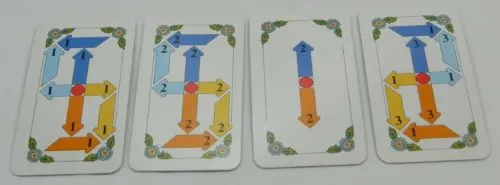
Here are the four cards in a player’s hand. They will choose one of the four cards from their hand to play. For an example if a player chooses the card on the far left they will be able to move up one left one, left one up one, right one down one, or down one right one.
Each group of arrows will have one or two movement arrows. One will indicate left/right movement while the other will indicate up/down movement. You will choose one of the groups of arrows on the card that you played and follow the number and direction of the chosen arrows. If there are two arrows you must start with the arrow that begins in the center of the card and then continue with the other movement.
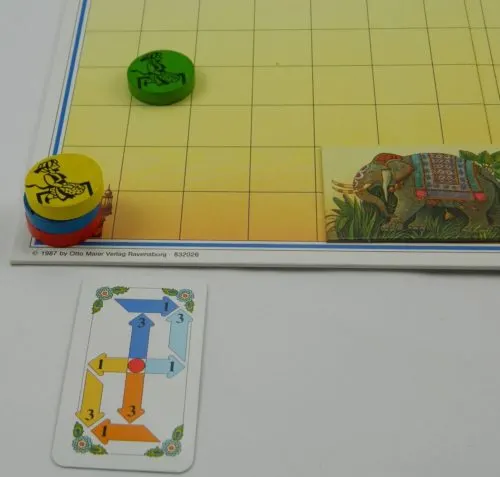
The green player played the card on the bottom of the picture. They chose to move up three spaces and right one space.
While moving you can never move through one of the obstacle cards.
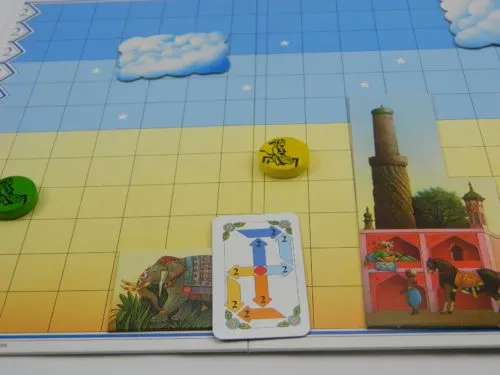
This player was trying to play this card to move up and right two spaces. This would move them into the building though so they couldn’t play it.
You can move through a space occupied by another player though. When moving you can only move in each direction once as zigzag movements are not allowed. If you ever move off the edges of the playing board you will move back to the start space.
If a player doesn’t want to play one of their Wind Cards, they can choose not to. Their Flying Carpet will then be moved based on the zone that it is currently in. If it is in the yellow zone (lowest zone), the Flying Carpet will be moved down one space. If the Flying Carpet is in one of the blue zones, it will be carried by the wind as shown below.
Direction Tiles
To help with your movement you are given Direction Tiles to begin the game. On each turn you have the option to play one of these tiles in addition to the Wind Card that you play. These tiles are used to add movement to the card that you played. They can be used to move one additional space left/right/up/down or reduce your movement by one space in one of the directions shown on the card.
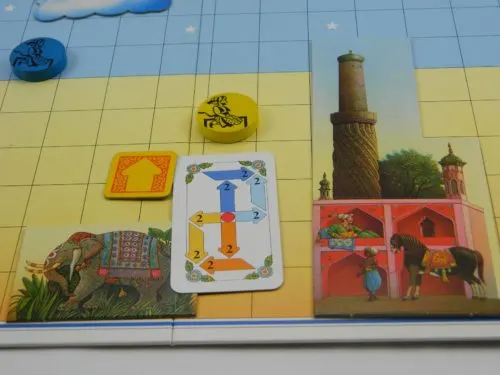
This player played a card to move up two and right two. As this would make them run into the building, they decided to use a Direction Tile to move up three spaces instead of two.
The Direction Tiles cannot be used to create a zigzag movement.
Wind Zones
When your Flying Carpet reaches one of the blue sections of the board, you will be impacted by wind. The light blue zone will move your Flying Carpet one space to the right. The dark blue zone will move your Flying Carpet two spaces to the right.
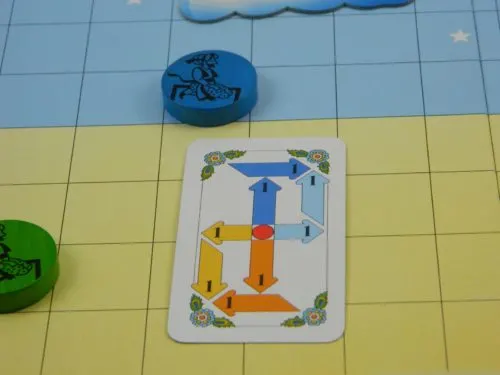
This player is in the light blue section of the board. This will allow them to move two spaces right instead of the one space shown on the card they played.
Wind Zones cannot be used in order to create a zigzag movement.
Star Spaces
When a player’s Flying Carpet lands on a star space they will get to roll the die. For the advanced version of the game the star spaces don’t do anything.
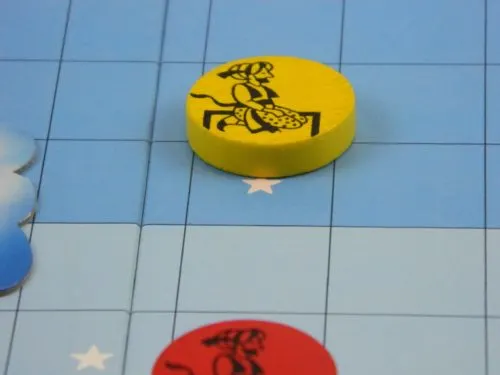
The yellow player has landed on a star space. They will get to roll the die and take the corresponding action.
The symbol rolled will determine what the player does.
Lose your next turn.
Reposition the cloud obstacles. You can choose to rearrange them however you want, but you can’t put them on top of a player’s playing piece or in a way that will box in a player.
Take another turn.
Take two Direction Tiles from the supply.
Switch positions with another player.
Move your Flying Carpet four spaces in any direction. When moving these four spaces you can make one turn. If you land on another star space you don’t get to roll again.
Landing On Another Player
If your Flying Carpet lands on another player you will get to choose one of two options. If you land on a space with two or more playing pieces, you must choose the same option for all of the pieces on your space.
You can choose to blockade the other player. If you choose this option, the other player loses their next turn.
Your other option is to force the Flying Carpet to land. With this option the Flying Carpet will be moved down in a straight line until it either lands on the top of a land obstacle (not a cloud) or reaches the bottom of the playing board. This player will not lose their next turn though. A player that moves through another Flying Carpet due to being forced to land will not impact the other player.
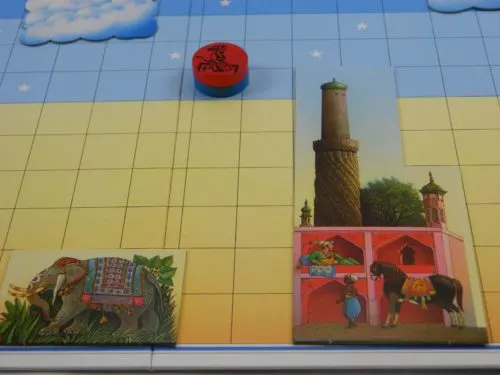
The red player landed on the same space as the blue player. The red player can either force the blue player to lose their next turn, or they can move them all the way to the bottom of the board to the space to the right of the elephant.
End of Turn
After you have moved your Flying Carpet, you will draw a new Wind Card from the draw pile to add to your hand. If you didn’t play a Wind card on your turn, you can choose to discard one of your cards in order to draw a new card. If the draw pile ever runs out of cards, you will reshuffle the discard pile.
End of Game
The objective of the game is to reach the end space (bottom right space) by exact count.
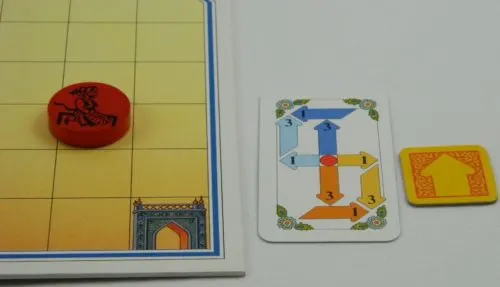
This player played a card that would move them down three spaces and right one space. They ended up using direction tile in order to only move down two spaces.
The first player to land on the space by exact count will win the game.
My Thoughts on Flying Carpet
If I were to describe Flying Carpet I would probably say that its closest comparison would probably be the roll and move and race genres. Basically the goal of the game is to get your flying carpet to the end before the other players. To accomplish this you will use the Wind Cards in your hand. These cards feature arrows which point in different directions indicating how your flying carpet will move if you play the card. Complicating things is the fact that you have to avoid obstacles and the other players. The first player to reach the finish space by exact count wins.
When you first look at Flying Carpet it looks like a game that was designed for children. This is mostly due to the colorful artwork, the overall design of the game, and the theme in general. Then you look at the game’s age recommendation and it says 12+. I personally think that recommendation is a little high. I wouldn’t say that the game is meant for young children, but I think children between like 8-10 should have no troubles with the game. This is mostly due to the game being pretty simple. Basically play a card and move your flying carpet in the corresponding direction. The rulebook is written in kind of a confusing way, but the game itself is quite easy to play. It does have more to it than your typical roll and move game, but I really don’t see anyone having significant issues while playing it.
Flying Carpet is never going to be confused for a highly strategic game, but I think it has more than you would initially expect. To do well in the game you need to plan ahead. If you are dealt the perfect cards you might be able to just pick a card, play it, and still be successful. You likely will end up getting into trouble though as you can’t navigate around the obstacles that stand in your way. Flying Carpet is a game that really rewards players for planning ahead. Outside of another player landing on your space and messing with you, you are actually able to plan several turns in advance as well. You can figure out how playing one card will allow you to play the next card. Depending on what additional cards you end up drawing, you can then alter your plan if you draw a better card. It might seem counterproductive to move left or down, but if you can combine this with another card that allows you to move forward quite a few spaces on your next turn it may be worth it.
For the first section of the game, planning isn’t that important as it should be pretty easy to make it around the obstacles that stand in your way. Towards the end of the game though you will have to start planning ahead. In particular you need to land on the finish space by exact count. Having some Direction Tiles left can definitely help, but you need to start positioning your flying carpet at least a turn or two early in order to make sure you can make the landing. If you don’t have a plan in place you could end up wasting several turns trying to position your carpet properly. Another player could then just sneak in and still the victory.
Flying Carpet is not a perfect game, but it honestly deserves some credit for what it accomplishes. Compared to games created today, it might not seem all that original. For a game released in 1987 though, you couldn’t really find many similar games. The game genuinely has some creative ideas that weren’t really prevalent for that era. In a way the game kind of feels like it was before its time.
This can be illustrated by the game’s customizable board. There were some other games from this era with customizable boards, but for a children’s/family board it wasn’t particularly common for a late 1980s game. I honestly thought the customizable board was a clever idea for a couple of reasons. First it creates more replay value for the game. As you can set up a different set of obstacles for each game, no two games will play the same. Additionally the placement of obstacles allow you to dynamically alter the difficulty of the game. Want an easy game, only use a few of the obstacles and put a bunch of space between them. Want a hard game, put a bunch of obstacles together which require regular changes in movement. This adds some time to setup, but I thought the customizable board was a good addition to the game.
While I thought Flying Carpet was pretty good for its age, it does have some faults that are going to really turn off some players. The biggest by far is that the game relies on quite a bit of luck. There is strategy to the game, but what strategy you can implement relies almost entirely on what cards you end up drawing. Some cards are simply better than others. Unless you have a real mess of obstacles that you have to move around, cards that allow you to move up and right are usually the best. There are times where moving down and left can be helpful, but they usually aren’t nearly as valuable. Ultimately the combination of the cards in your hand is what really matters. If you get a bunch of cards that work well together, you are going to be better off than someone who gets a bunch of cards that don’t work well together.
Adding to this are the star spaces and the die. The die is optional as the advanced game eliminates it entirely. These spaces are kind of interesting as they do have some risk/reward. Most of the rolls are generally helpful or at least don’t have much of an impact on you. There can be times though where it can really hurt you. The risk somewhat offsets the fact that the mechanic adds a lot of luck to the game. Some of the things that you can roll will help you a lot. Thus player lucky enough to have cards to land them on one of these spaces and also roll a good side will get a pretty big benefit in the game.
Flying Carpet has a decent amount of strategy especially for a family/children’s game created in 1987. The player that can plan a few turns in advance will have an advantage in the game. If you don’t plan ahead and thus make bad decisions, you are likely to lose the game. It ultimately doesn’t matter how good your strategy is though if luck is not on your side. While the game recommends a hand size of five in order to make the game shorter, I also wonder if it will reduce some of the game’s luck. It is not all that surprising that a game meant for families relies on a decent amount of luck, but I wish it played a little less of a role in the game.
This reliance on luck does occasionally create a runaway leader problem. Most games can be pretty close as the players should be pretty competitive until the very end. There will be some games where one or two of the players get a huge lead though due to the cards they are dealt or through other circumstances. This leads to a game that can be kind of boring especially if you are one of those players that has fallen too far behind where you have no chance of coming back.
One of the things that can contribute to the runaway leader problem is that the game can actually be quite mean. While it is kind of hard to do, landing on another player’s piece can be quite powerful. You can choose to either make them lose their next turn, or knock them down a lot of spaces. Losing a turn can hurt a lot as it could be the difference between winning and losing the game. Even worse though could be the other option as your flying carpet could be sent down a large chasm. If the building is tall enough it could take several turns just getting back to your prior location. If you get knocked down a deep chasm you are going to have a hard time coming back.
Before wrapping up I wanted to quickly talk about Flying Carpet’s components. For a game that is 34 years old at this point, I thought the components were pretty good. They won’t compare with high end games made today, but for their time I think they are quite good. I love that the game used wood playing pieces even though I wish they were more than just wooden discs with a picture engraved on them. The game’s artwork is pretty good as it helps with the theme without being over-cluttered. The component quality is also pretty good where they should last if they are taken care of.
Should You Buy Flying Carpet?
While Flying Carpet is not a perfect game, I think it deserves credit for being before its time. The game shares a lot in common with your typical racing game, but with some added strategy due to the cards. The game is quite simple where it can be learned within a couple of minutes. There is some strategy to the game though. For the best results you need to plan out how you are going to play the cards in your hand. A card may not seem very useful at first, but when combined with another card it could help quite a bit at getting you to your final destination. While there is strategy to Flying Carpet it does rely on quite a bit of luck though. The cards you draw will have a big impact as some cards are better than others, and you need to draw cards that work well with the rest of your cards. The game can also be kind of mean where you can affect the other players quite a bit.
My recommendation for Flying Carpet mostly depends on your thoughts on the premise. If you generally prefer games with quite a bit of strategy or don’t really care for the premise, Flying Carpet probably won’t be for you. If after reading how the game is played though and you were intrigued, I think you will enjoy the game and should consider picking it up.
Buy Flying Carpet online: Amazon, eBay
. Any purchases made through these links (including other products) help keep Geeky Hobbies running. Thank you for your support.

